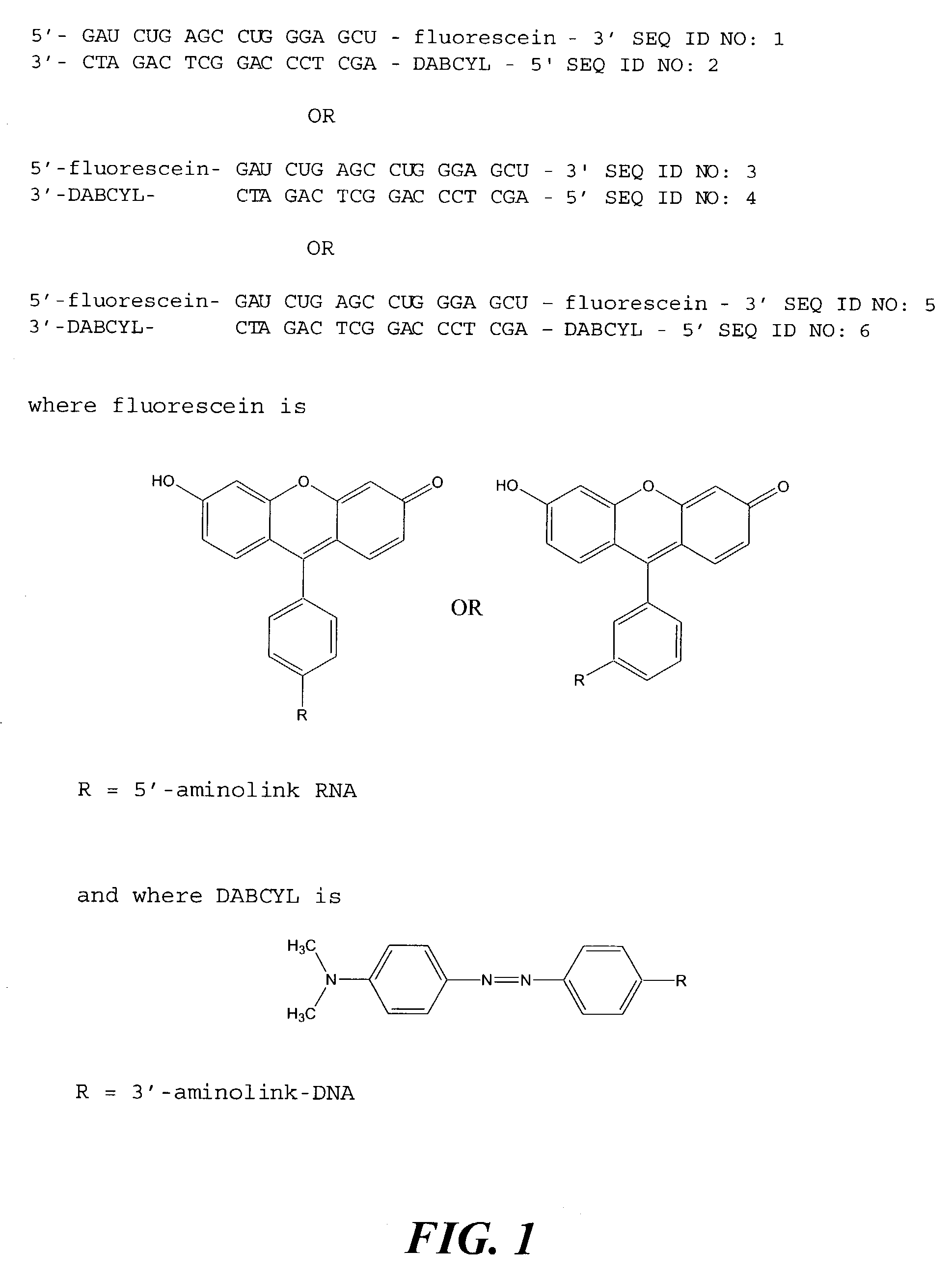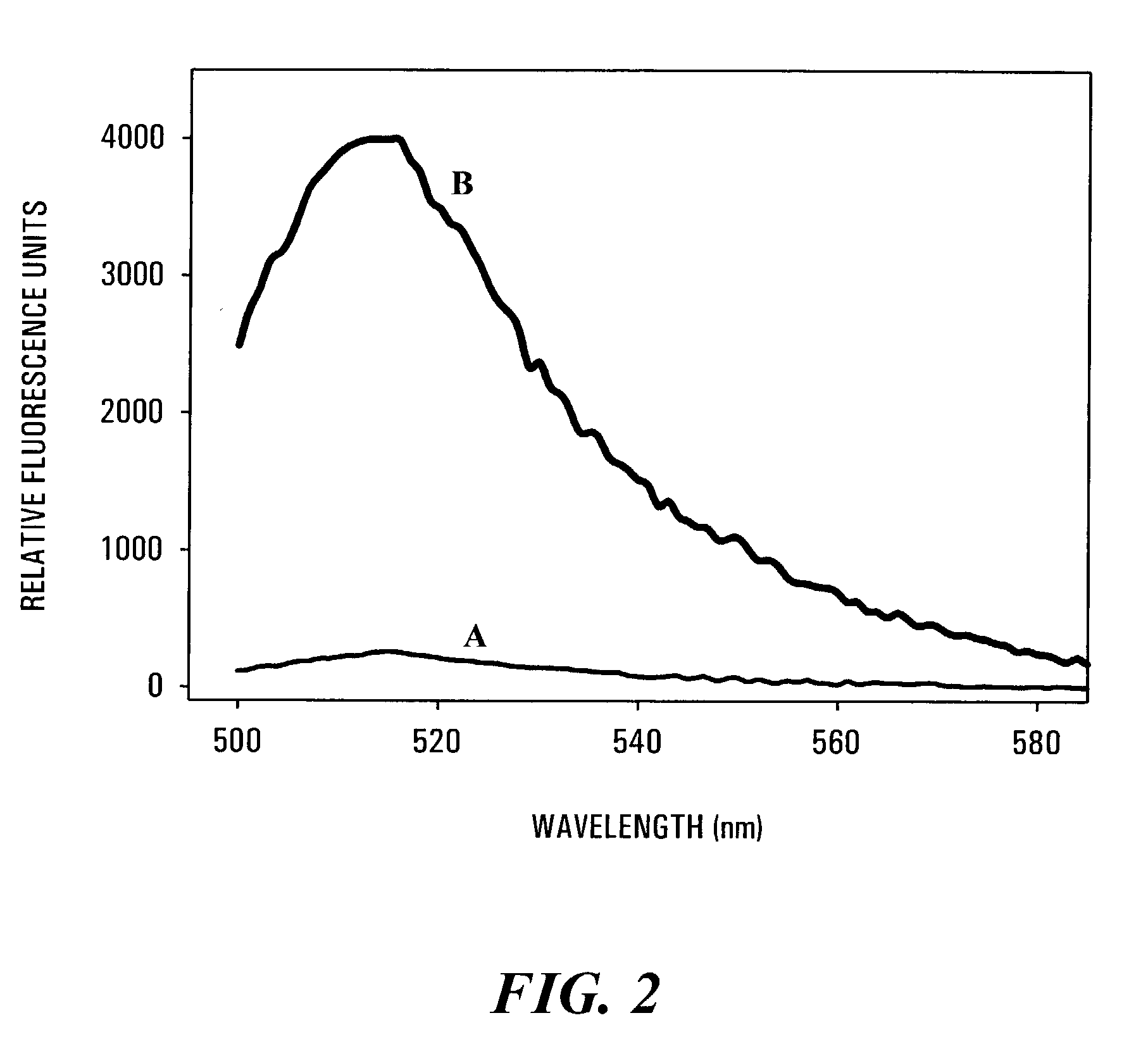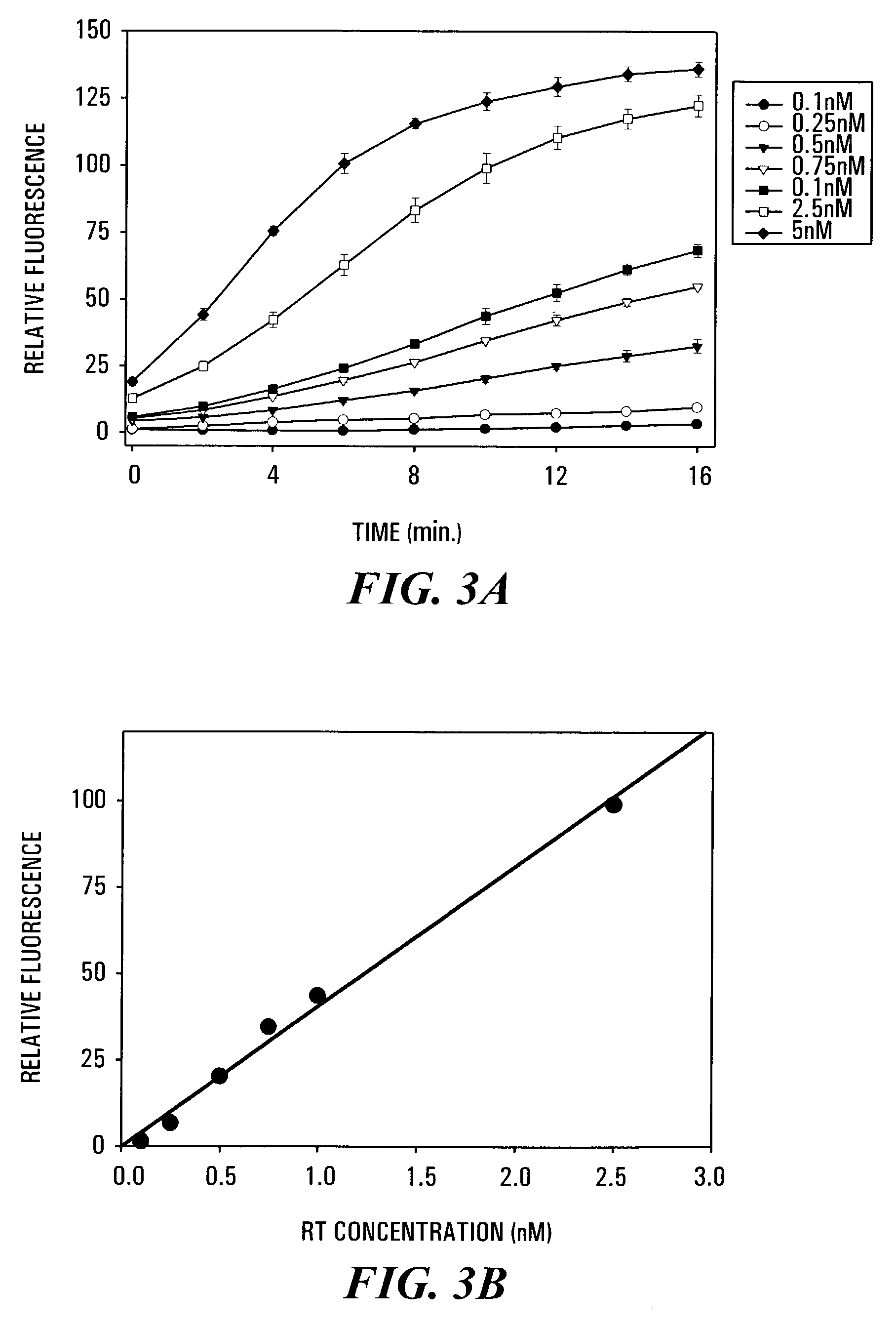Substrate for assaying ribonuclease H activity
a ribonuclease and assay technology, applied in the field of substrates and methods for assaying ribonuclease h activity, can solve the problems of drug-resistant hiv, unfavorable prognosis, and incurable and inevitable death,
- Summary
- Abstract
- Description
- Claims
- Application Information
AI Technical Summary
Benefits of technology
Problems solved by technology
Method used
Image
Examples
example 1
Preparation of the Fluorophore-RNA / Quencher-DNA Hybrid Duplex Substrate.
[0110]An example of a suitable substrate for use in the assay of the present invention comprises an RNA oligonucleotide modified at the 3′-end with Aminolink-2 and derivatized with fluorescein isothiocyanate, to provide a modified RNA oligonucleotide of the sequence 5′-GAU CUG AGC CUG GGA GCU-fluorescein-3′ (SEQ ID NO: 1), annealed to a complementary DNA oligonucleotide modified at the 5′-end with Aminolink-2 and derivatized with the FRET acceptor DABCYL succinimidyl ester, to provide a modified DNA oligonucleotide of the sequence 5′-DABCYL-AGC TCC CAG GCT CAG ATC-3′ (SEQ ID NO: 2).
[0111]Alternatively, the substrate for use in the present invention is an RNA oligonucleotide modified at the 5′-end with Aminolink-2 and derivatized with fluorescein isothiocyanate, to provide a modified RNA oligonucleotide of the sequence 5′-fluorescein-GAU CUG AGC CUG GGA GCU-3′ (SEQ ID NO: 3), annealed to a complementary DNA oligo...
example 2
Fluorescence Emission Spectra of the 3′-Fluorescein-RNA / 5′-DABCYL-DNA Hybrid Duplex Substrate Before and After Treatment with HIV-1 RT RNase H.
[0117]A volume of 3′-fluorescein-RNA / 5′-DABCYL-DNA hybrid duplex substrate solution containing 60 pmol of the oligonucleotide duplex was added to 300 μl reaction buffer comprising 50 mM Tris / HCl (pH 8.0, 37° C.) and containing 60 mM KCl and 2.5 mM MgCl2, in a spectrofluorometer cuvette. The solution was excited with light at 490 nm, and the steady-state fluorescence spectrum was recorded using a Quanta Master QM-1 T-format fluorescence spectrometer (Photon Technology International, Princeton, N.J.). Virtually no fluorescence emission was noted over the range of 500 to 600 nm, proving that the 3′-fluorescein-RNA / 5′-DABCYL-DNA hybrid duplex substrate was a very efficient FRET system. Following recording of the unreacted FRET spectrum, an aliquot of HIV-1 RT was added to provide a final concentration of 2.5 nM of p51 / p66 RT. The sample was mixed...
example 3
Effect of RNase H Concentration on the Time Dependence of the FRET Assay.
[0118]Aliquots of 85 μl of 50 mM Tris / HCl (pH 8.0, 37° C.), containing 60 mM KCl and 2.5 mM MgCl2, and 0.2 μM of 3′-fluorescein-RNA / 5′-DABCYL-DNA hybrid duplex substrate were added to individual wells of a fluorescence microtiter plate and warmed to 37° C. using the temperature control of the SpectraMax Gemini XS microplate spectrofluorometer. Reactions were started by the addition of 5 μl of various solutions of recombinant HIV-1 reverse transcriptase (RT) such that the final concentration of RT in the individual assays ranged from 0.1 nM to 5 nM of p51 / p66 heterodimer, and mixing using the automatic mixing function of the microplate spectrofluorometer. The increase in fluorescence at 528 nm was measured at regular time intervals using excitation at 490 nm and a 515 nm cut-off filter. Under these conditions, the rate of increase of fluorescence emission at 528 nm was found to be directly proportional to the co...
PUM
| Property | Measurement | Unit |
|---|---|---|
| pH | aaaaa | aaaaa |
| total volume | aaaaa | aaaaa |
| temperature | aaaaa | aaaaa |
Abstract
Description
Claims
Application Information
 Login to View More
Login to View More - R&D
- Intellectual Property
- Life Sciences
- Materials
- Tech Scout
- Unparalleled Data Quality
- Higher Quality Content
- 60% Fewer Hallucinations
Browse by: Latest US Patents, China's latest patents, Technical Efficacy Thesaurus, Application Domain, Technology Topic, Popular Technical Reports.
© 2025 PatSnap. All rights reserved.Legal|Privacy policy|Modern Slavery Act Transparency Statement|Sitemap|About US| Contact US: help@patsnap.com



